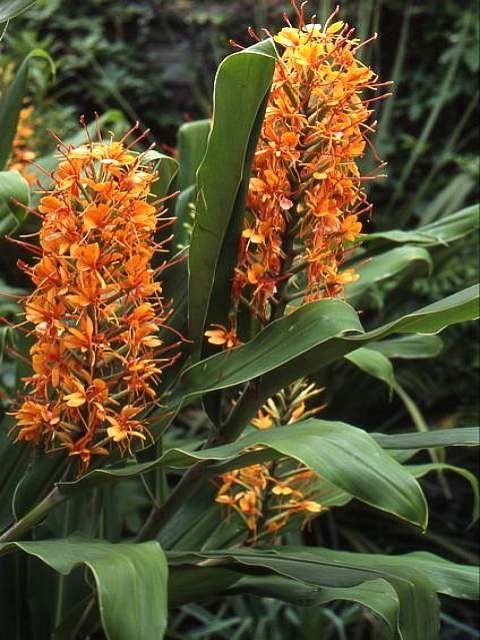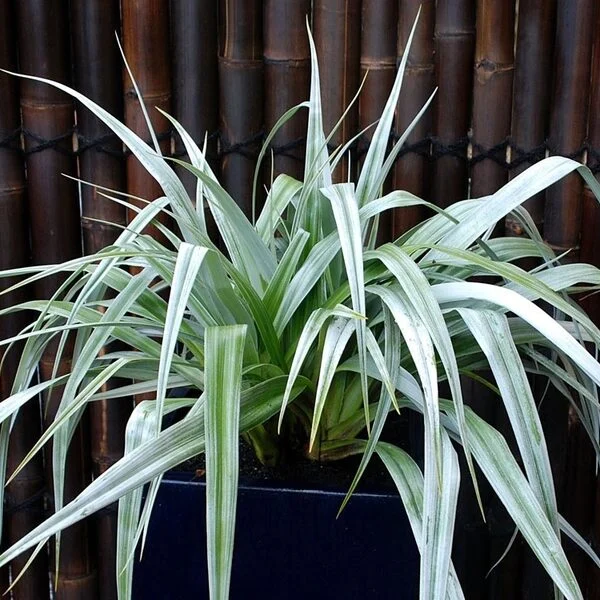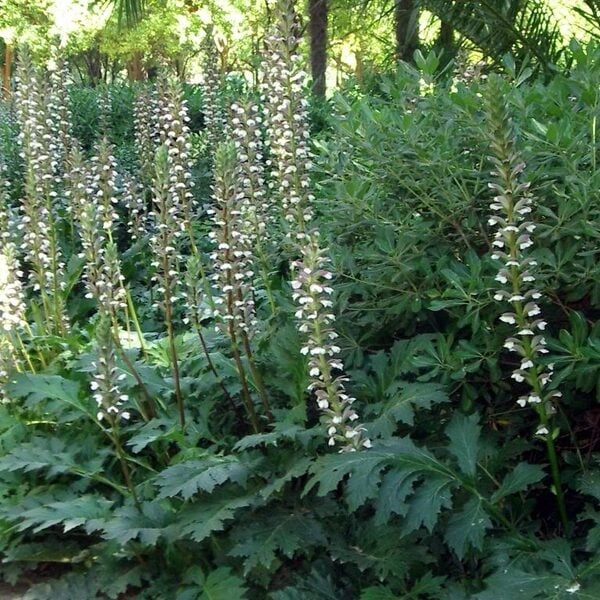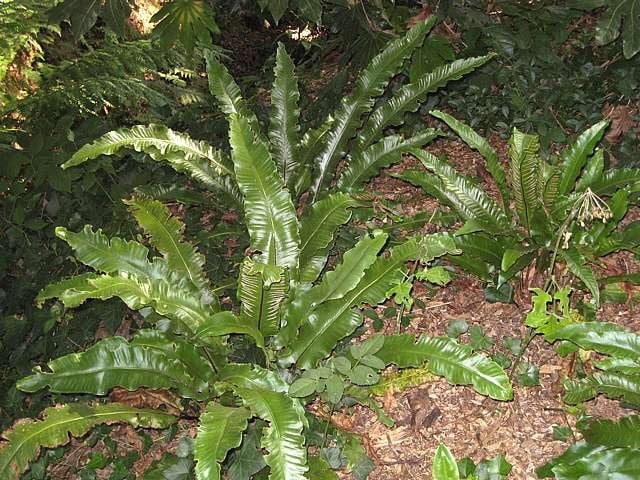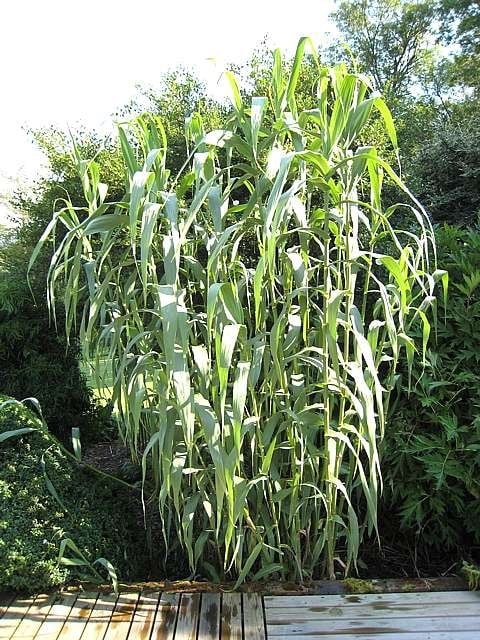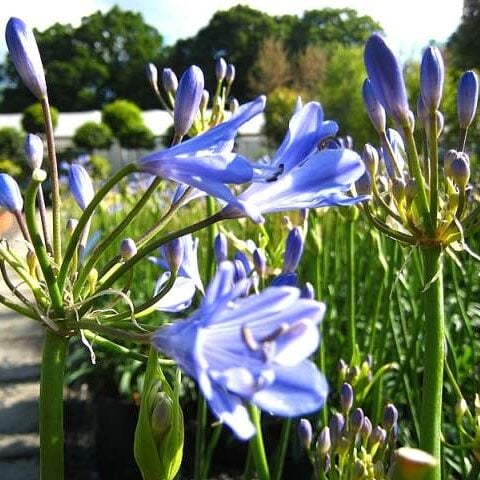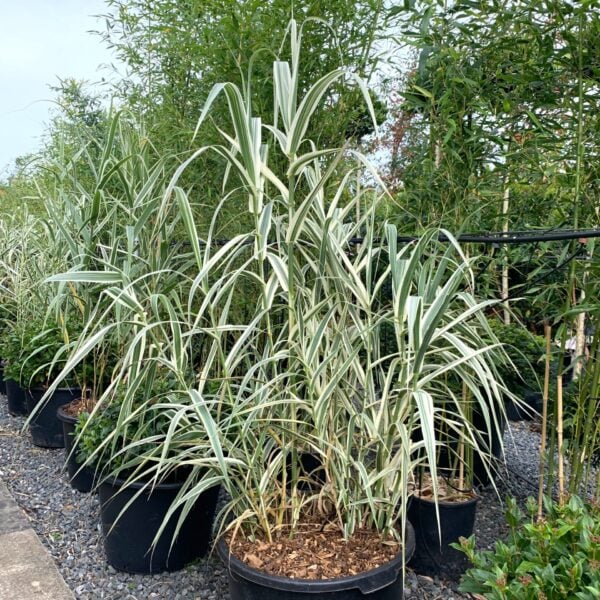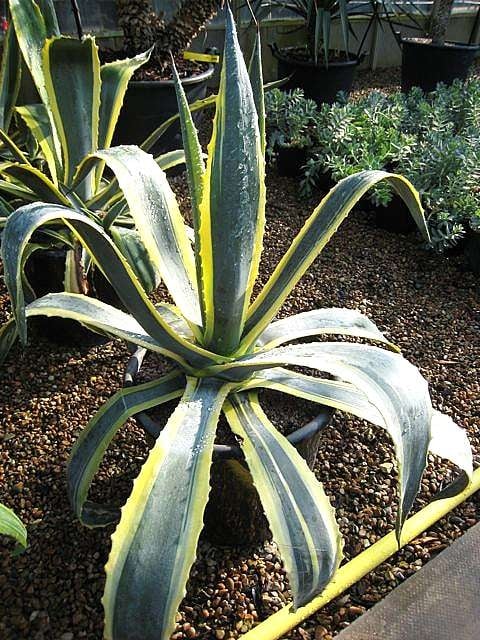Hedychium coccineum ‘Tara’ (Ginger Lily)
The best ‘all round’ Ginger Lily. Jungly leaves to 6ft with strong orange, mildly fragrant, flowers in September. Root hardy. Please contact us for stock availability and sizes.

Hardiness level Amber
A herbaceous exotic from the Himalayas, northern India and southern China. We reckon this Hedychium is a perfect compromise between frost hardiness and that exoticness. It has strong orange flowers, typical of the genus and weirdly magnificent. Smells nice, too. Grows around 3 to 4ft so not too high and mighty but with enough presence to surprise visitors. The hardy Hedychiums come from mountainous areas of south east Asia and are related to the tropical ginger plant. Use you finger nail to scrape some of the flesh from the stump of one of these and - on a good day - the smell of ginger is unmistakable. They're lush and leafy with exotic flowers, die down in winter, reappear quite late (June) but flower rewardingly late too (August, September and even October). Some of them have fragrant flowers - see below.
To do their thing they need the right conditions : deep rich soil in sun (to flower) and in cold gardens worth mulching in winter to protect the crown. Use of Tomorite (a tomato food) might be worth trying. Lots of phosphate but little nitrogen encourages plants to flower. Tomato plants that don't flower are a fat lot of good and some might argue the same about Hedychiums.
Growing in a pot works pretty well - especially in very cold gardens. Keep frost free in the winter and they'll remain evergreen. Wakehurst Place in Sussex is a great place to see them growing outside. Many of the species and forms they have growing there were introduced by Tony Schilling, Curator of the gardens in the 1980s and 90s from expeditions by him to Asia. The forms 'Steven' and 'Tara' are named after his son and his daughter.
We do three different species :
Hedychium coccineum 'Tara' (this one) : The perfect compromise between frost hardiness and exoticness. Strong orange flowers with a nice fragrance. 3 to 4ft.
Hedychium garderianium : The least hardy one we do but with such a wonderfully powerful smell, we couldn't not do it. For a conservatory in the winter or a mild garden. 3 to 4ft
Hedychium forrestii : The toughest and most vigorous of the lot with white flowers but no obvious fragrance. To 6ft.
For inspiration (and reassurance re. hardiness) Wakehurst Place in Sussex is a great place to see them growing outside. Many of the species and forms they have growing there were introduced by Tony Schilling, Curator of the gardens in the 1980s and 90s from expeditions by him to Asia. This glorious form is named after his daughter, Tara.
As it's pretty reliably hardy, you can plunge this one into a sunny border in mild areas and cover with plenty of mulch to tuck it in. If you’re feeling super-protective, though, they can be lifted and the roots stored somewhere frost-free in dry compost.
Great against a sunny wall or tucked into a courtyard corner. In fact, it looks superb in a chunky terracotta pot (orange-flowered plants typically do) In spots like this, their chubby rhizomes can bask in summer and slumber cosily in winter.
N.B. When clipping several plants with the same tool, have a bucket containing a 5% bleach solution and swish your blades around for 30 seconds between plants to sterilise them. This will help avoid the chance of cross contamination of disease.
As with all woody plants, plant high, exposing as much of the taper at the base of the trunk as possible. Allowing soil to accumulate round the base of a tree can be fatal. Keep very well watered when first planted.
All propagated by us either by division or micropropagation.
Additional Information |
|
|---|---|
| Soil Type | |
| Light | |
| Plant Type | |
| Continent of Origin | |
| Specialist Plants | Grown by Us, House Plants/ Indoor Plants, Mediterranean, Rare & Unusual (Collectables) |
| Situation | Coastal, Conservatories, Mild City Gardens, Plants for Pots, Sheltered Garden |
| Flower Colour | |
| Hardiness | |




